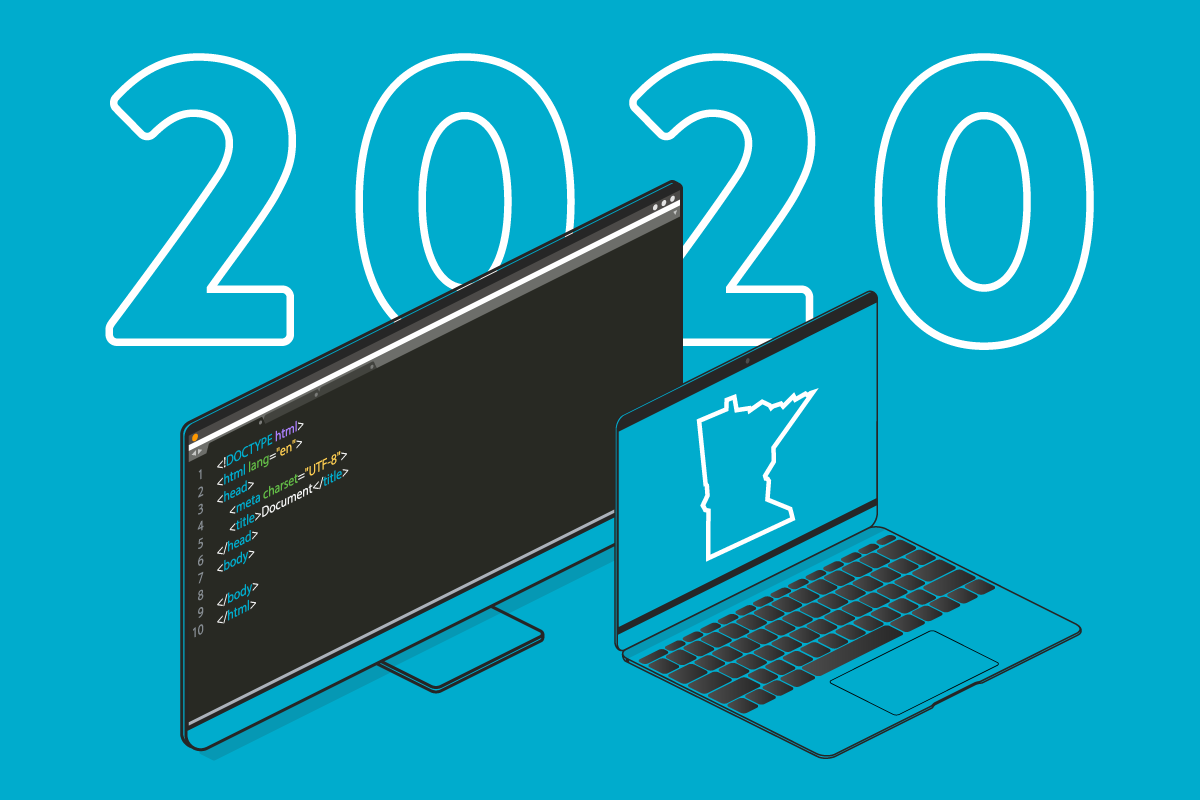Find the latest news from the Office of Accessibility. Once a month we will bring you tips, articles, and ways to learn more about digital accessibility. Want an easier way to stay informed? Subscribe to the Accessibility Newsletter!
2020 Year in Review
12/16/2020 7:00:00 PM

2020 was a big year for anniversaries. It was the 30th anniversary of the Americans with Disabilities Act (ADA), and the:
In addition to national anniversaries, September 1 was the 10-year anniversary of the state of Minnesota’s digital accessibility standard.
Like many other 2020 plans, celebrations of all these important milestones changed or now have future dates due to the coronavirus pandemic.
The shift of some long-planned celebrations to virtual events underscores the increased role digital accessibility played this year. As the state’s workforce moved from offices to their homes, the increased reliance on digital communications due to remote work heightened the need for accessible content and technology.
Here are just a few examples of key milestones and related events at various agencies throughout the state. Just because an agency isn’t mentioned doesn’t mean that they aren’t also doing similar activities.
As they moved home, many of the state’s hard-working digital accessibility professionals saw increasing requests for support and resources for accessibility.
Two agencies increased their commitment to supporting full-time digital accessibility coordinators. The Minnesota Department of Health (MDH) created a new full-time coordinator position, and the Minnesota Department of Natural Resources (DNR) changed a current role from temporary to permanent.
Several agencies added accessibility training requirements for staff. The Department of Employment and Economic Development (DEED) required all staff to take the first two modules of an online training course in creating accessible Word documents (here’s the public version). Other agencies created plans to roll out the training to their staff.
Multiple agencies reported continued progress on making their websites more accessible.
For example, one agency has methodically corrected code for pages with:
Multiple agencies reported improving menus and navigation flow to make it easier for everyone, including assistive technology users, to use their sites.
Several agencies also improved the accessibility of graphical images, including maps and graphical dashboards.
State Services for the Blind (SSB) developed a Radio Talking Book app for national distribution (profiled in an interview last May).
MNsure reported that they have implemented a content development workgroup. Their goal is to standardize content creation, publishing, and maintenance of accessibility standards and usability best practices in the workflows and service level guidelines.
Staff at MNsure are also writing accessibility into the core requirements for forms design and development. Instead of asking for an accessibility review at the end of the forms process, the goal is to embed accessibility into the process and minimize rework.
Metropolitan Council hired a vendor to do an audit and provide an organizational assessment of digital accessibility practices, gaps, and opportunities at the Council.
Even the legislative branch is getting into the action! In addition to involving the Office of Accessibility on a major project (profiled in an upcoming Office of Accessibility newsletter), legislative staff attended an all-day training and many formed a Legislative Accessibility Group (LAG) to share tips, ideas, and resources.
One of the Minnesota Department of Education’s (MDE) accomplishments this year was the significant involvement of its MNIT accessibility coordinator on several Requests for Proposals (RFPs), notably an application for the continuous improvement process. All web postings go through an accessibility review, and the team developed a process to get videos captioned with quick turnaround.
The Minnesota Council on Disabilities also has a dedicated point of contact to ensure that they write accessibility into every RFP and to provide technical assistance on those projects.
The leadership at Minnesota Management and Budget (MMB) recently recognized their Digital Accessibility Coordinator and other staff for the work that went into making the biennial budget accessible.
Minnesota Council on Disabilities includes digital accessibility in the new employee onboarding process.
The Department of Public Safety (DPS)’s efforts have been highly visible as they have managed many of the Governor’s news conferences. Their staff worked to ensure both captioning and American Sign Language (ASL) interpreters are available at all the conferences.
Many other agencies report increased awareness of the need to improve digital accessibility content and services. They tracked this through a variety of metrics including but not limited to:
Digital accessibility is a journey – as technology evolves and changes, some problems get solved while new challenges take their place. The passion, dedication, and knowledge the state’s digital accessibility coordinators bring to their jobs are key to making state information and services available and usable to all its citizens.
Would you like to learn more about the accessibility work being done by Minnesota IT Services and the State of Minnesota? Once a month we will bring you more tips, articles, and ways to learn more about digital accessibility.
Accessibility